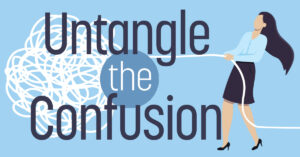It’s an ever-changing world. Whatever you thought your business path was for 2024, it’s a good bet you are already seeing the need to adjust.
With most banks being in a “wait-and-see” mode for commercial lending, 2024 will be a tough year to find the funding that your clients need to survive, grow and even expand their businesses. If brokers cannot deliver funding solutions for their clients, then their own survivability in commercial real estate could very well be in question.
“The job of commercial loan brokers is to paint the picture to lenders while providing all the documentation and information they need to decide whether to fund deals.”
Now more than ever, business owners need a great broker in their corner. There is a very limited amount of banking capital that is available for commercial lending and the underwriting for those loans are some of the tightest guidelines seen in years. The old cliche that banks only want to lend money to borrowers who really do not need it is becoming a reality.
No one should blame the banks for the current state of lending. Financial institutions get their guidelines largely from the Federal Reserve. The direction the Fed is currently issuing to banks is that they need to be careful when they are loaning money for commercial real estate projects. The organization led by Chairman Jerome Powell has a very real fear of a meltdown in commercial real estate values. This could leave banks being stuck with collateral that is underwater when it comes to liquidation.
Funding struggles
The lending environment is far different than the one that existed prior to the COVID-19 pandemic. In those times, good deals got the funding they needed and helped support a strong and fast-growing economy. Today, great deals are struggling to find funding.
The current state of lending offers a great opportunity for a well-seasoned commercial loan broker. Unfortunately, there are circumstances where multiple brokers are shopping the same deals to various bridge-lending companies. This means that the brokers shopping such deals do not have true relationships with the borrowers. That is simply not good business.
It is confusing to lenders and sends the message that the borrowers are not serious about getting the funds they need. If the borrowers were serious, they would have vetted several commercial loan brokers and chosen to work with just one. Instead, they engaged multiple brokers just looking for the best possible pricing and then deciding which of the lenders to use.
Paint a picture
This strategy also puts lenders in the middle of confrontations with loan brokers. Here is why: What if a lender gets a deal presented to them by broker A? They review the information and find that it is lacking. Based on the information the lender has received, they decide to pass on the deal.
Then the lender receives the same deal in the next week from broker B. The package from broker B is more detailed and has information that broker A did not include. In this situation, only one of the commercial brokers knew the right questions to ask and the right information to collect.
“The current state of lending offers a great opportunity for a well-seasoned commercial loan broker.”
Lenders are inclined to protect the brokers who send them deals. After all, that is how business gets done. If lenders pass on a deal from one broker, only to find that when new information is gathered and a new package for the same deal is more detailed as well as fundable, what should they do?
The job of commercial loan brokers is to paint the picture to lenders while providing all the documentation and information they need to decide whether to fund deals. Most lenders don’t like to dig for deals. In other words, a broker’s presentation and credit memo — which outlines the nature of a borrower’s credit for the deal — should be precise and to the point. If the presentations are too short, they will not have all the information the lenders need to decide.
If they are too long, lenders will get bored and set the information aside. They are more likely to work on deals that are more understandable and that they do not have to dig through a report to get the information they need. It is a balance and one that can make or break a borrower’s loan request.
Educating brokers
So how does one fix these issues facing commercial loan brokers? One answer is to find the right lenders offering help.
Some lenders work to educate broker partners when presented with the opportunity. There are online training tools to help teach brokers some of the basics of the business. They provide an introduction to sales tactics, deal processing and what types of loans are out there in the marketplace.
A few lenders even offer mentoring programs where they will work directly with brokers and help them get their business up and running. Learning the techniques and habits developed by the best commercial brokers is one of the best ways for newer members of this industry to find success.
This is a lesson the automotive industry has already put into action. One program in particular is known as the NCM Associates 20 Group peer collaboration model. Developed in 1947, the organization gathers similar, non-competing automotive business owners from different parts of the country who share experiences, ideas and strategies to help all members expand their businesses.
As part of the program, members share their corporate financial information. That information is then put together in a side-by-side comparison guide so that everyone can see how their dealerships compared to the other dealerships in their group. The NCM 20 Group is a very effective tool for automotive dealerships to utilize.
Best practices
A similar approach can work for the commercial real estate industry. By bringing the most successful commercial brokers together and identifying the best practices and procedures in the industry, other brokers can learn these best practices and be successful brokers. They may even go out and launch their own group of 20 brokers.
Many will wonder if such programs simply end up educating the competition. That is the wrong way to think of such a tool, however. If one educates commercial loan brokers and gives them a best practices and procedures guide, it raises up the entire industry. Commercial lending is a trillion-dollar-plus industry. If such a program can educate and raise up the commercial broker industry, everybody wins.
The borrowers become more confident that they are working with knowledgeable brokers to secure the funding they need. And the lenders will know they are working with the best brokers who understand the right questions to ask and how to present a quality deal to lenders. The brokers win by becoming experts in their field and closing more loan transactions. It’s a win for everyone.
● ● ●
Seeking out the commercial real estate industry’s best practices and procedures will bring better results, more closings and ultimately more income to the bottom line. There is no time to waste. Make it your mission to learn from the best and expand your industry knowledge for the good of all clients — past, present and future. ●
Author
-

Terry Luker is founder and chairman of both Alternative Capital Solutions and Commercial Capital BIDCO, Inc. With more than 30 years in the finance community, Luker is an expert in deal structure and creative financing options. This creative outlook has been paramount to the companies’ success over the past decade. His company plans to launch its own 20 Group for Commercial Loan Brokers to bring together successful brokers and identify industry best practices and procedures.





